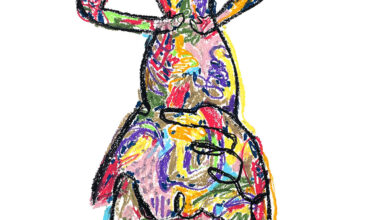CITY GUIDES: ZAPORIZHIAN SICH
The Ukrainian region of Zaporizhia has always been keen on keeping Cossak traditions’. Recently, National Park Khortytsya resurrected an old Cossack village, where locals take their 18th century lifestyle as seriously as their haircuts.

Zaporizhian Sich was a military centre for Ukrainian knights named “Cossacks” back in the 16th and 18th centuries. It was destroyed numerous times, changed multiple locations, and saw a lot of battle.
A Sich was essentially a village with everything people needed to flourish including a church, market and taverns. It was a centre for much of the military planning and a place where political deals were made with the Russians, as well as with the Poles, the Turks and the Tatars whom Ukraine was often historically intertwined with. Later, Zaporizhian Sich also became a trade center.
The history of Ukrainian Cossacks has three distinct points. Their combat against Tatars and Turks in the prairie and on the Black Sea. Their participation in the struggle against socioeconomic and national-religious oppression from Poles. And their contribution in the building of an independent Ukrainian state.
At the end of the 18th century, political and military power of the Cossacks began to weaken, and in 1779 Sich was eventually abolished by the Russian Empress Catherine the Great.

In 2009, National Park “Khortytsya” became the location of new Zaporizhian Sich. The new village was re-built with historical accuracy, allowing those who kept a traditional lifestyle to flourish within its gates. Present Sich is located in place of the first Zaporizhian Sich, on the island of Khortytsya. A number of modern Cossacks now live on the Sich. Outside daily life, they spend their time playing old Ukrainian instruments, smoking pipe, performing gravity defying riding tricks in the horse theatre and sword fighting for public enjoyment.
Part of being a Cossack is, of course, dressing like one. Like all warriors, these people are extremely proud of their heritage and put a lot of effort into their look. Cossack hairstyle is distinctive to say the least. Strangely similar to the style of Indian yogis’, “Oseledets” is a long lock of hair, lonely on top of a closely shaved head. Traditionally its length is such that you can tuck it behind the ear, and it was often worn with a long, generous moustache. It’s worn solemnly by high-rank military men. Less experienced soldiers were forbidden to wear the haircut as it was a real honor and a crossover point when a Cossacks head could finally be bladed. To have your oseledets cut off was a severe punishment and dishonor for a Cossack. A scene of such event was portrayed in Gogol’s “Propala Hramota”, who used Zaporizhiah as inspiration for much of his work. At one point in history however, every male in Ukraine cut his hair into this topknot, as being a Cossack was a great aspiration. Cossacks used to joke that they wear the oseledets so that the enemy would have something to hold on to should they succeed in decapitating a Cossack. In reality the look probably came from past Slavic royalty, who used it to mark their noble birth, they were also men of war and it’s assumed that Cossacks adapted the look from them.
One of the most important aspects of Cossack culture is eating and drinking. Kazatsky Stan, is a restaurant with beautifully pained windows that allow you, if only for a moment, to dive into one of Gogol’s most romantic, supernatural and humorous tales, “Evenings on a Farm Near Dikanka”. A place where lip smacking traditional Ukrainian dishes like varenyky (dumplings), shashlyk (kebab), and authentic Ukrainian borstch (pronounced borsh) are served with samogon (home-distilled vodka 75-95%) and horilka (Ukrainian vodka), while you enjoy live folk music and dancing.

Text by Sofia Shershunovich
Images by Olena Slyesarenko











